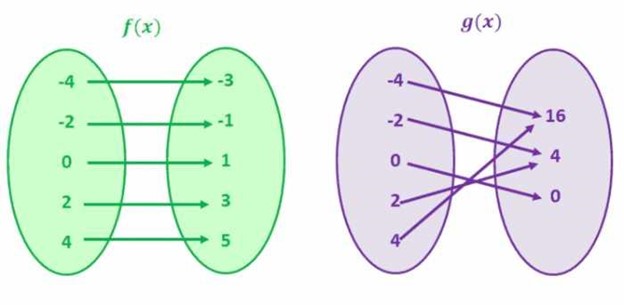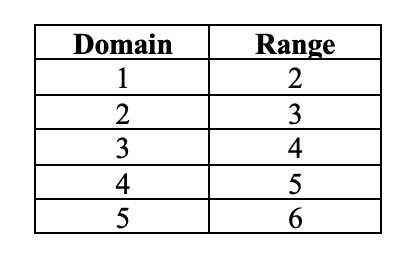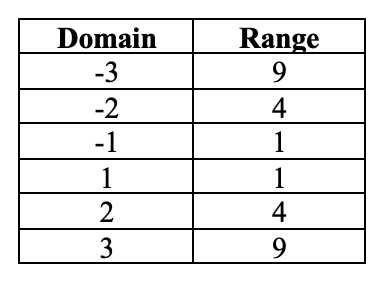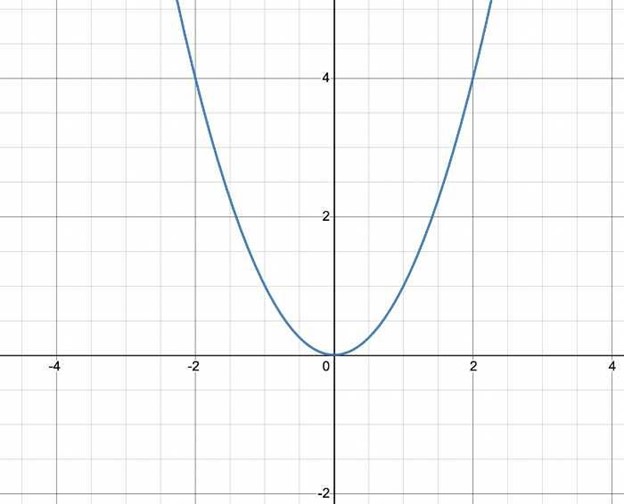One to One Functions - Graph, Examples | Horizontal Line Test
What is a One to One Function?
A one-to-one function is a mathematical function where each input correlates to only one output. So, for each x, there is only one y and vice versa. This means that the graph of a one-to-one function will never intersect.
The input value in a one-to-one function is known as the domain of the function, and the output value is the range of the function.
Let's study the examples below:

For f(x), any value in the left circle correlates to a unique value in the right circle. In the same manner, every value on the right corresponds to a unique value in the left circle. In mathematical words, this signifies every domain has a unique range, and every range owns a unique domain. Therefore, this is a representation of a one-to-one function.
Here are some more representations of one-to-one functions:
-
f(x) = x + 1
-
f(x) = 2x
Now let's look at the second image, which shows the values for g(x).
Pay attention to the fact that the inputs in the left circle (domain) do not own unique outputs in the right circle (range). Case in point, the inputs -2 and 2 have the same output, that is, 4. In conjunction, the inputs -4 and 4 have the same output, i.e., 16. We can comprehend that there are identical Y values for many X values. Hence, this is not a one-to-one function.
Here are additional representations of non one-to-one functions:
-
f(x) = x^2
-
f(x)=(x+2)^2
What are the properties of One to One Functions?
One-to-one functions have these characteristics:
-
The function has an inverse.
-
The graph of the function is a line that does not intersect itself.
-
The function passes the horizontal line test.
-
The graph of a function and its inverse are identical concerning the line y = x.
How to Graph a One to One Function
In order to graph a one-to-one function, you will need to find the domain and range for the function. Let's study a simple representation of a function f(x) = x + 1.

As soon as you possess the domain and the range for the function, you need to plot the domain values on the X-axis and range values on the Y-axis.
How can you determine whether a Function is One to One?
To prove whether a function is one-to-one, we can leverage the horizontal line test. As soon as you graph the graph of a function, trace horizontal lines over the graph. If a horizontal line moves through the graph of the function at more than one spot, then the function is not one-to-one.
Since the graph of every linear function is a straight line, and a horizontal line does not intersect the graph at more than one place, we can also conclude all linear functions are one-to-one functions. Remember that we do not use the vertical line test for one-to-one functions.
Let's look at the graph for f(x) = x + 1. As soon as you chart the values for the x-coordinates and y-coordinates, you ought to consider whether or not a horizontal line intersects the graph at more than one place. In this case, the graph does not intersect any horizontal line more than once. This indicates that the function is a one-to-one function.

Subsequently, if the function is not a one-to-one function, it will intersect the same horizontal line multiple times. Let's study the graph for the f(y) = y^2. Here are the domain and the range values for the function:

Here is the graph for the function:

In this example, the graph crosses numerous horizontal lines. Case in point, for either domains -1 and 1, the range is 1. In the same manner, for each -2 and 2, the range is 4. This implies that f(x) = x^2 is not a one-to-one function.
What is the inverse of a One-to-One Function?
Considering the fact that a one-to-one function has only one input value for each output value, the inverse of a one-to-one function is also a one-to-one function. The opposite of the function basically reverses the function.
Case in point, in the event of f(x) = x + 1, we add 1 to each value of x as a means of getting the output, i.e., y. The opposite of this function will remove 1 from each value of y.
The inverse of the function is denoted as f−1.
What are the characteristics of the inverse of a One to One Function?
The properties of an inverse one-to-one function are the same as every other one-to-one functions. This implies that the opposite of a one-to-one function will have one domain for every range and pass the horizontal line test.
How do you figure out the inverse of a One-to-One Function?
Finding the inverse of a function is very easy. You just need to switch the x and y values. For instance, the inverse of the function f(x) = x + 5 is f-1(x) = x - 5.

Considering what we reviewed earlier, the inverse of a one-to-one function reverses the function. Considering the original output value required adding 5 to each input value, the new output value will require us to delete 5 from each input value.
One to One Function Practice Examples
Contemplate the subsequent functions:
-
f(x) = x + 1
-
f(x) = 2x
-
f(x) = x2
-
f(x) = 3x - 2
-
f(x) = |x|
-
g(x) = 2x + 1
-
h(x) = x/2 - 1
-
j(x) = √x
-
k(x) = (x + 2)/(x - 2)
-
l(x) = 3√x
-
m(x) = 5 - x
For each of these functions:
1. Identify whether or not the function is one-to-one.
2. Graph the function and its inverse.
3. Determine the inverse of the function mathematically.
4. Specify the domain and range of both the function and its inverse.
5. Use the inverse to find the solution for x in each calculation.
Grade Potential Can Help You Master You Functions
If you find yourself having problems using one-to-one functions or similar topics, Grade Potential can connect you with a 1:1 instructor who can help. Our Philadelphia math tutors are experienced professionals who assist students just like you improve their mastery of these types of functions.
With Grade Potential, you can learn at your own pace from the convenience of your own home. Schedule an appointment with Grade Potential today by calling (215) 883-4685 to get informed about our teaching services. One of our consultants will call you to better determine your needs to set you up with the best tutor for you!




